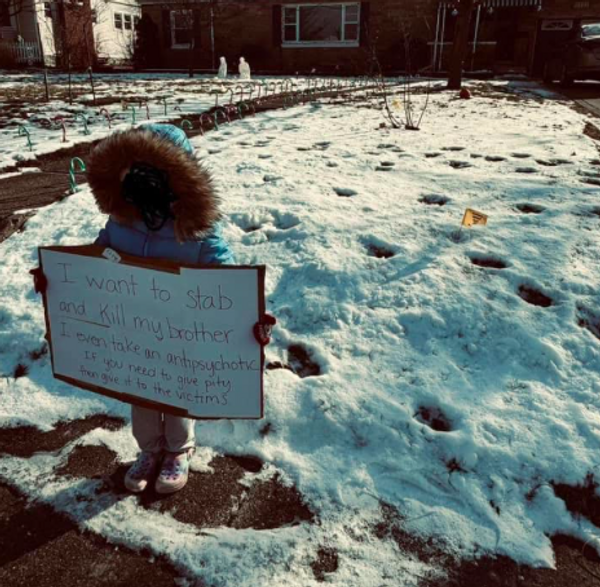
Catherine Lacey, 37, is the author of three previous novels, including The Answers, currently being adapted for television by Darren Aronofsky, and Pew (2020), about a nameless amnesiac of ambiguous race and gender. Her new novel, Biography of X, set in a parallel America, follows a widow untangling the life story of her wife, an avant-garde artist known as X. The New York Times has called it “sprawling and ambitious… strange and dystopian”. Lacey, one of Granta’s best young American novelists in 2017, was speaking from her home in Brooklyn.
Which part of the book came first: the alternate history or the fake biography?
I liked the idea of writing a fake biography and the biographies I like best are usually written by someone with some kind of compromised perspective. I thought the worst person to write a biography would be a surviving spouse with a bit of a grudge, but I didn’t want to get into the heterosexual dynamics of a man writing about a woman or a woman writing about a man; it had to be two women. At the same time, I wanted the novel to be set in the mid-20th century but I wasn’t interested in writing about the actual struggles a prominent lesbian couple would have gone through in that time. So my alternate history grew out of that problem. I thought, if I have an America where this female artist could exist and this couple could exist without having to justify themselves, I just need a totally different America.
As a workaround, it hardly cut corners.
I liked that! I started the novel in 2016 at the same time that I was writing Pew, which takes place in a week and was so spare. I’d decided to make myself write Pew quickly to see what would happen; I found that I can do it, I just prefer not to. Biography of X was more a kind of collecting project that I knew would take longer.
Where do the various photographs of X come from?
A lot of them I found in junk shops; for the images of her books, I commissioned jackets from a book designer.
Why did you include real names from the art and book world?
I saw it as another tool to make the novel as much like a biography as possible. There’s a quote [used in the book] from the New Yorker critic Merve Emre that is actually something she wrote about a Susan Sontag biography. There are a lot of names in there. A lot of them I made up.
Like the critic “Richard Cusk”.
His quote is from Rachel Cusk’s essay on Celia Paul, about being female and making art. It was full of insights related to what I was writing, but by the time I set up the novel’s world I knew the essay would have to be flipped into a man arguing for his right to make art.
Why does the story stop short of the 21st century?
My fiction has never actively involved cellphones or the internet. It’s too big; I can’t get near it. The internet I’m still on mentally is the more isolated, late 90s internet that was about weird web design and play. It wasn’t that constant nervous Twitter energy, which repels me. I do use cellphones and the internet – I’m not off in a cabin – but they’re a plot killer.
Did you have qualms about portraying the American south as a separatist theocracy?
It’s an exaggerated nightmare of what could have happened to that part of the country. I didn’t want a cheap shot. I’m southern. I grew up in Mississippi and then in Tennessee and my whole family still lives in Mississippi. I don’t want to be one of those people who dismisses Mississippi as full of ignorant racists, because it’s not. The culture I grew up in is the reason I write. I think for a lot of writers coming out of the south it’s a very complicated place. It’s America magnified: everything problematic about America just made really big.
What draws you to characters who find it so hard simply to exist?
I think it’s reacting to my very biblical childhood. It’s not a conscious thing: “Oh, I’ll insert a character that refuses identity or has difficulty with a fundamental aspect of their existence.” I think it’s just what happens when you leave a religion. Part of you is always going to ask: “Why? Why any of this?” Not many of the people I grew up with have left the south and most of the ones who go to church take a soft view of their own belief: “Maybe there’s a god, maybe there isn’t; it doesn’t really matter, I just like going to church.” I could never be that way; the minute I didn’t believe, I couldn’t go.
Name a (real) biography you admire.
Joshua Rivkin’s Chalk: The Art and Erasure of Cy Twombly. While he was writing it the estate decided they didn’t want him to do it and started making his life very difficult. So halfway through the biography his attempt to write the book becomes part of the story. He gets at something of Twombly’s life and work and the way people respond to it. I broke down looking at his last painting at the Twombly museum in Houston. Most Twombly fans – and I’d put myself in this category – have some very extreme response to his work that feels mysterious.
What else have you enjoyed reading recently?
My Life by Lyn Hejinian: a strange, amazing memoir. Last summer, I was staying with a friend who had it in her house. I picked it up one morning and read it all that day. I used to be very rigid about what I read and when; I used to have a schedule, almost. But I find I’m much happier when I just let books sort of stumble into my life.
• Biography of X is published on 6 April by Granta (£18.99). To support the Guardian and Observer order your copy at guardianbookshop.com. Delivery charges may apply







